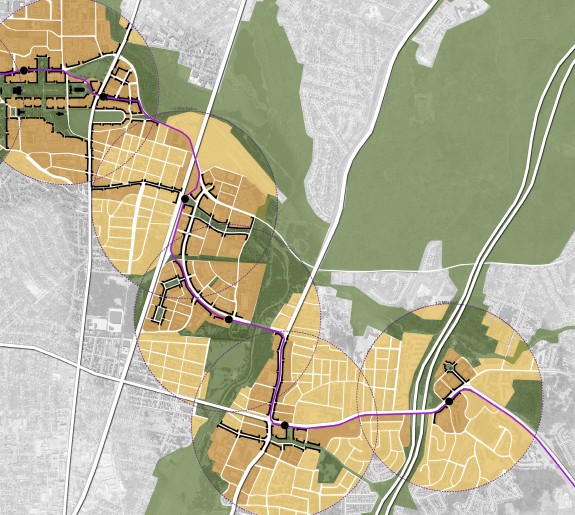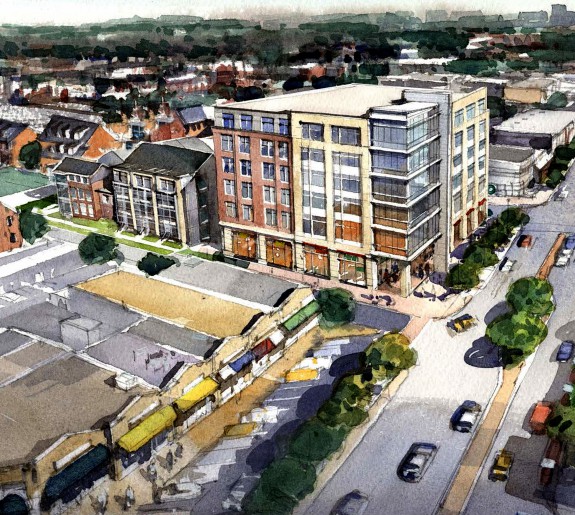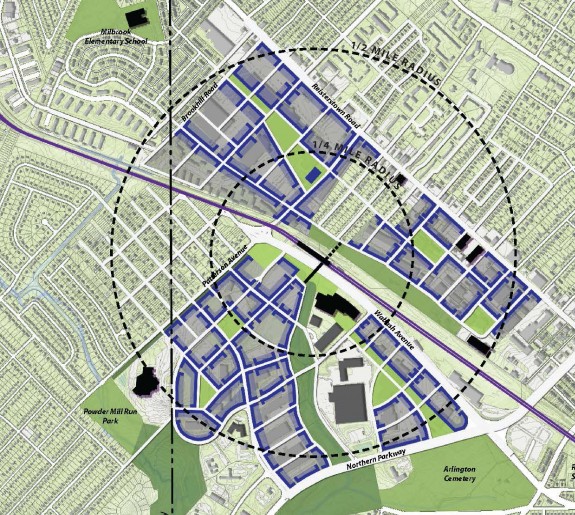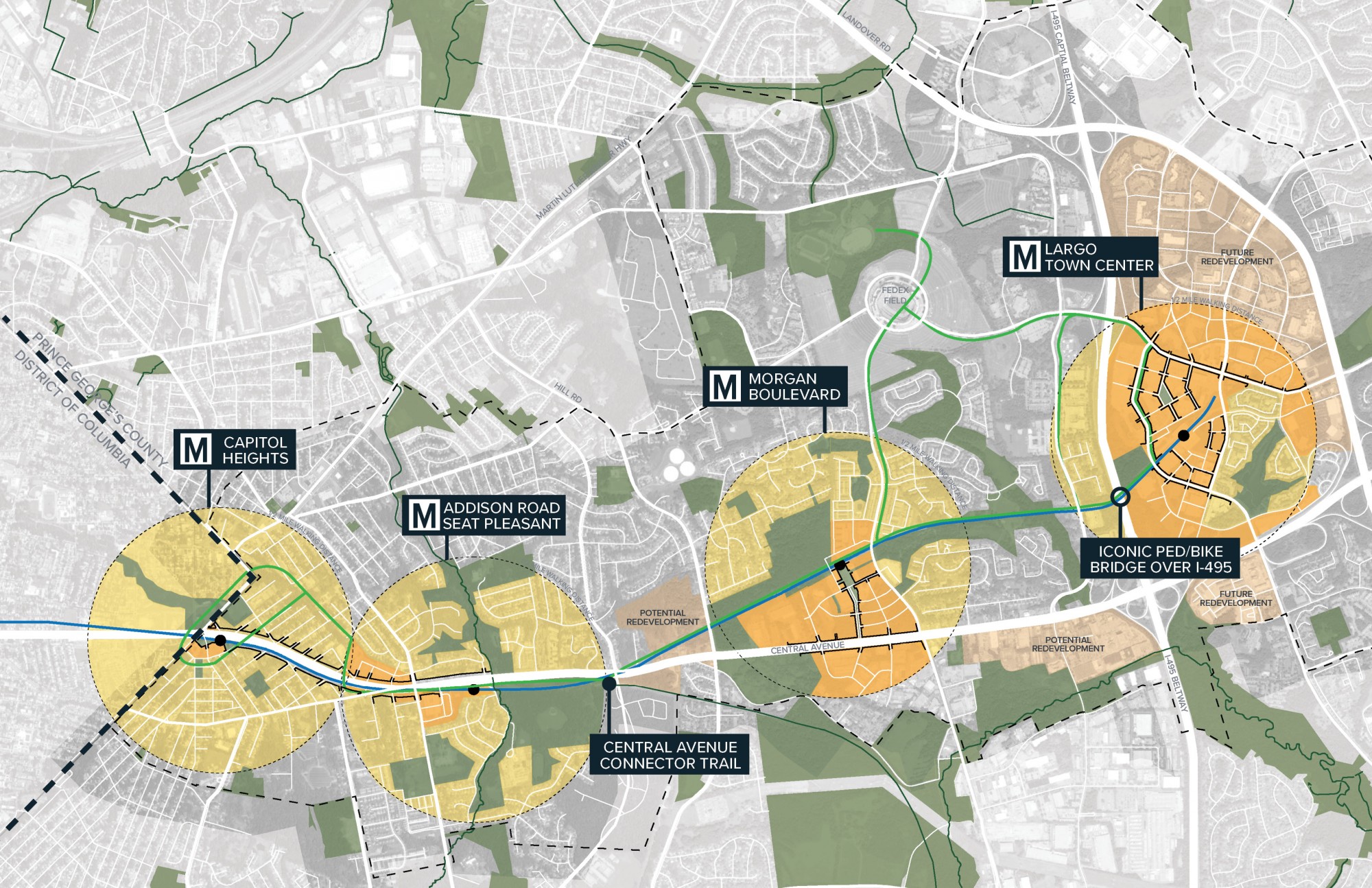

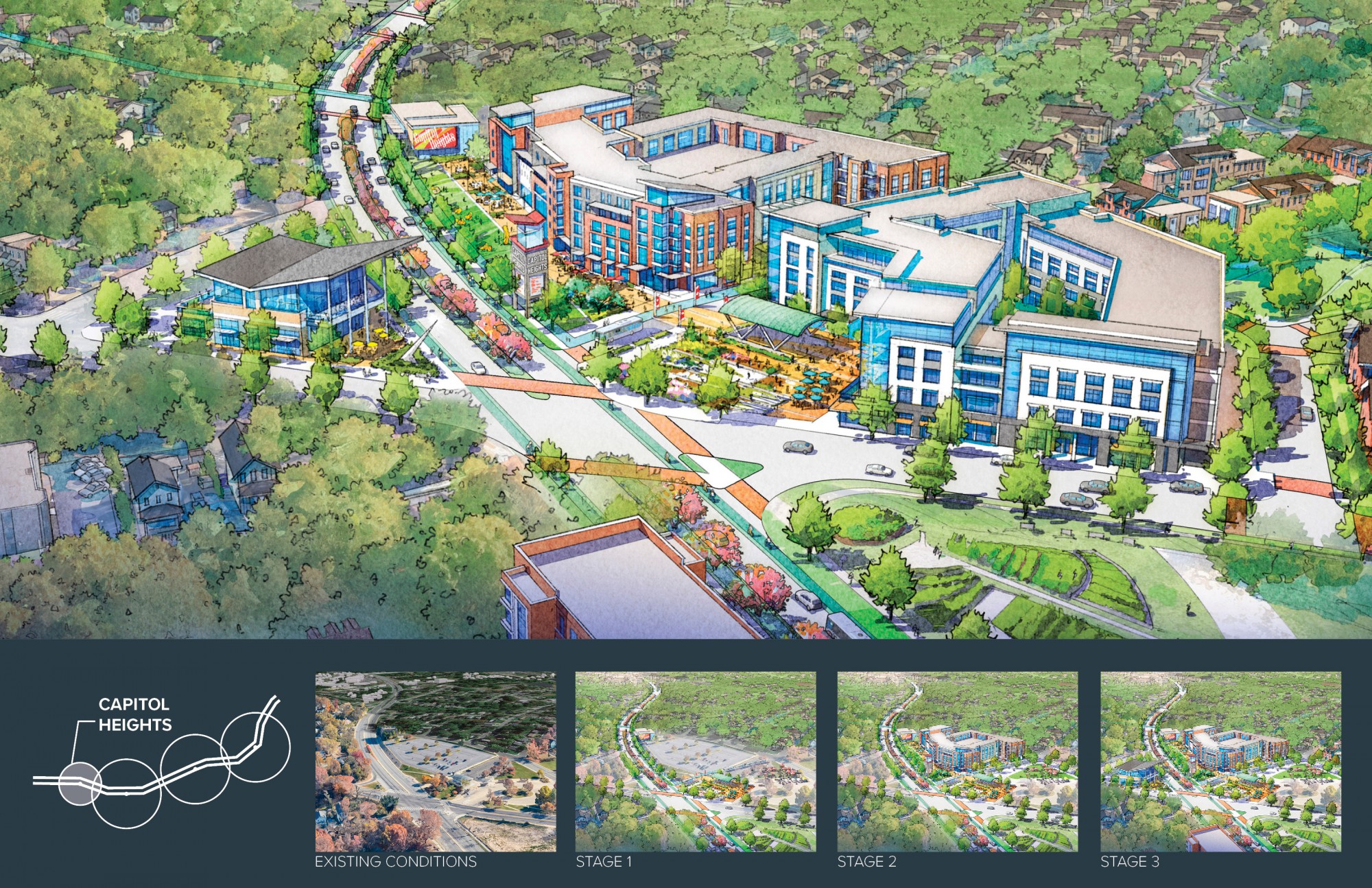
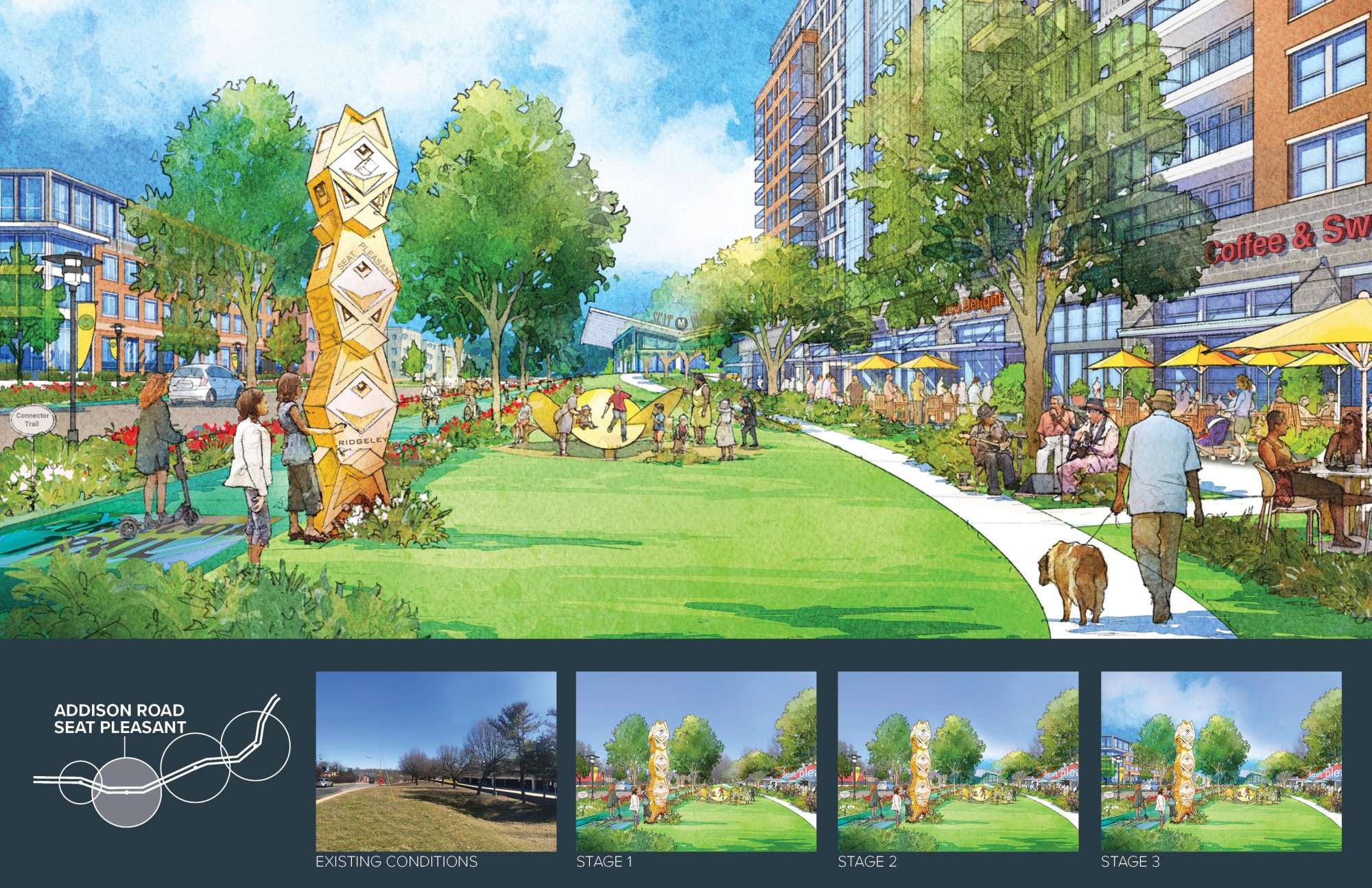
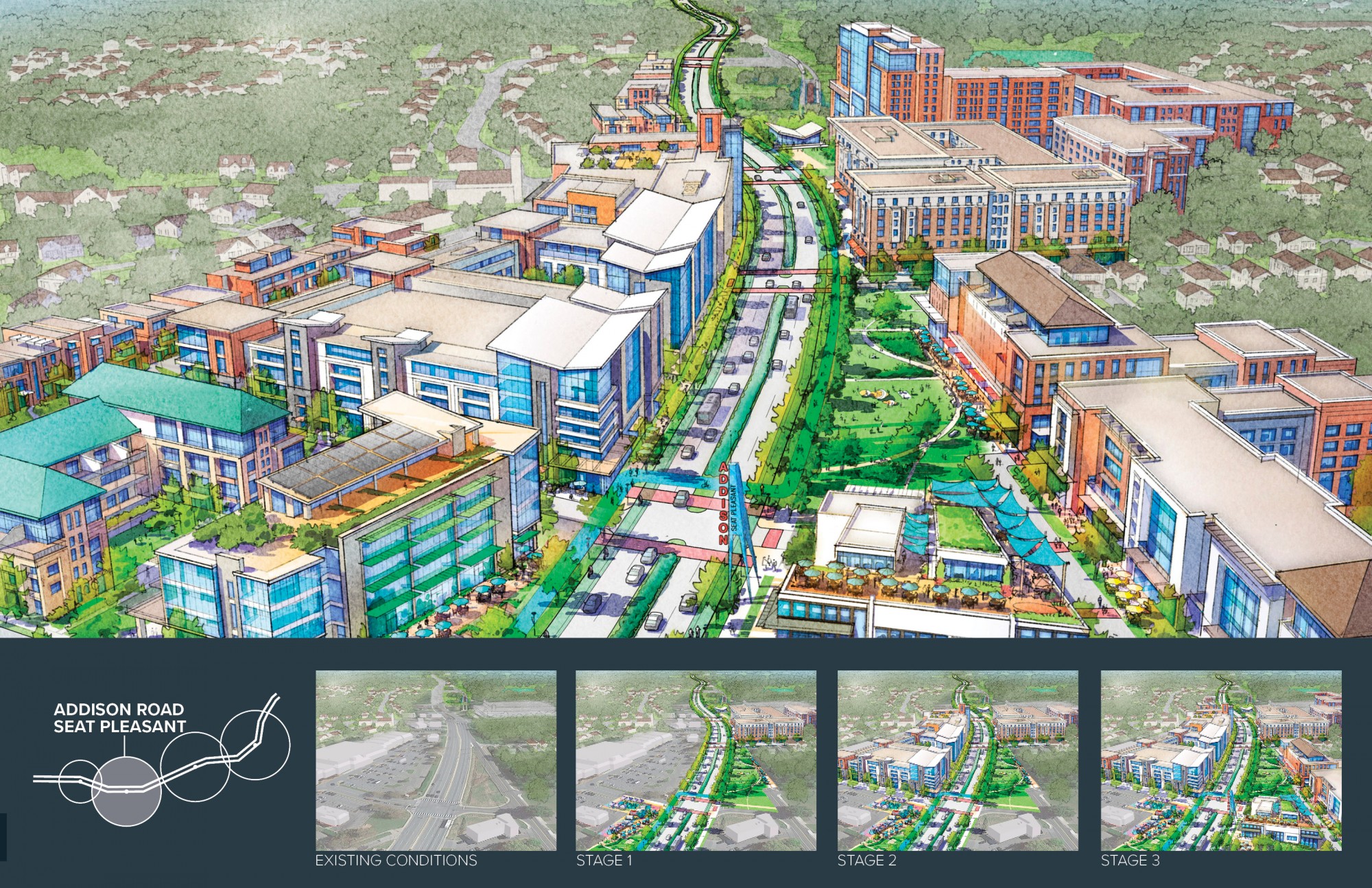
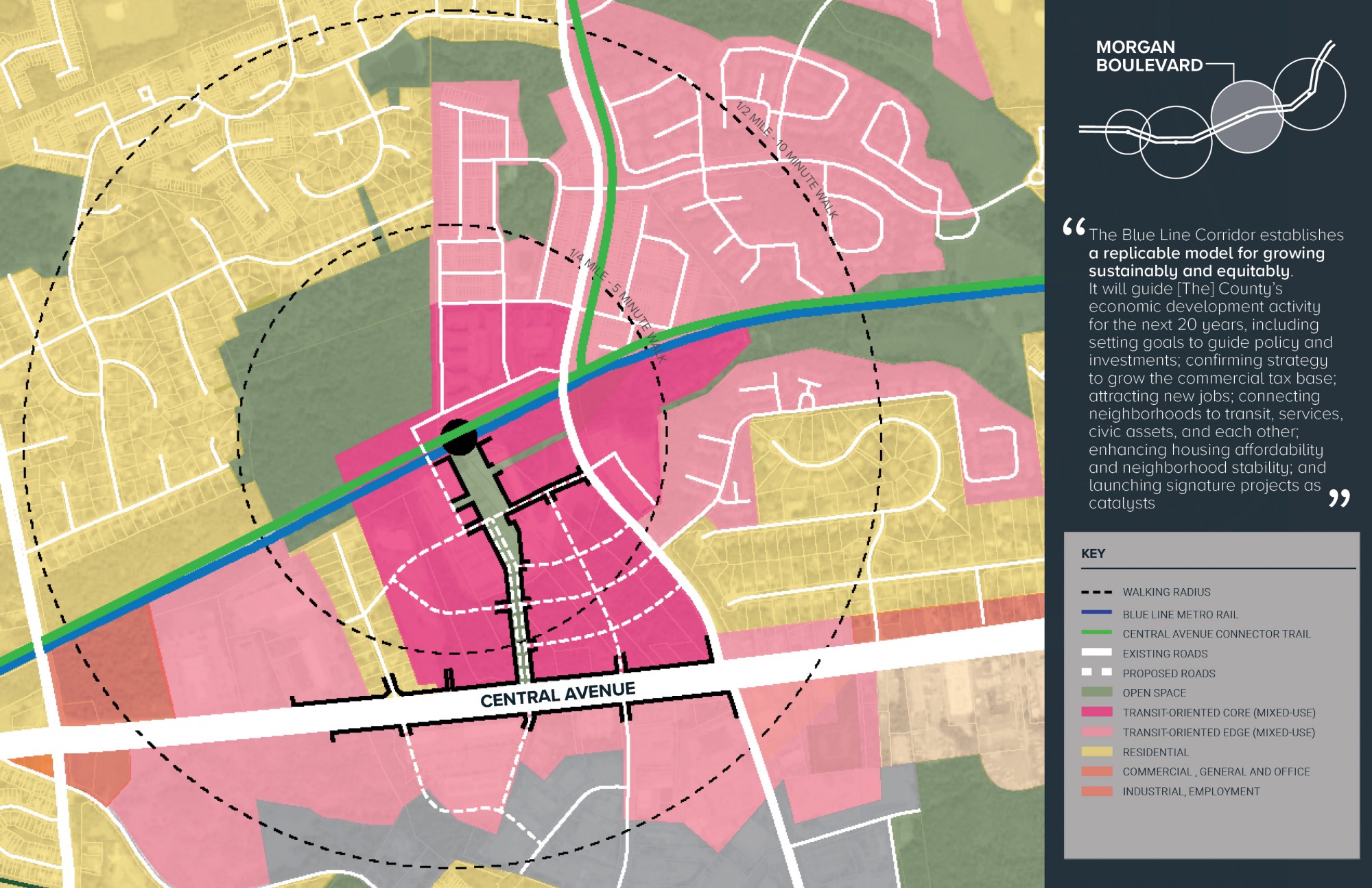
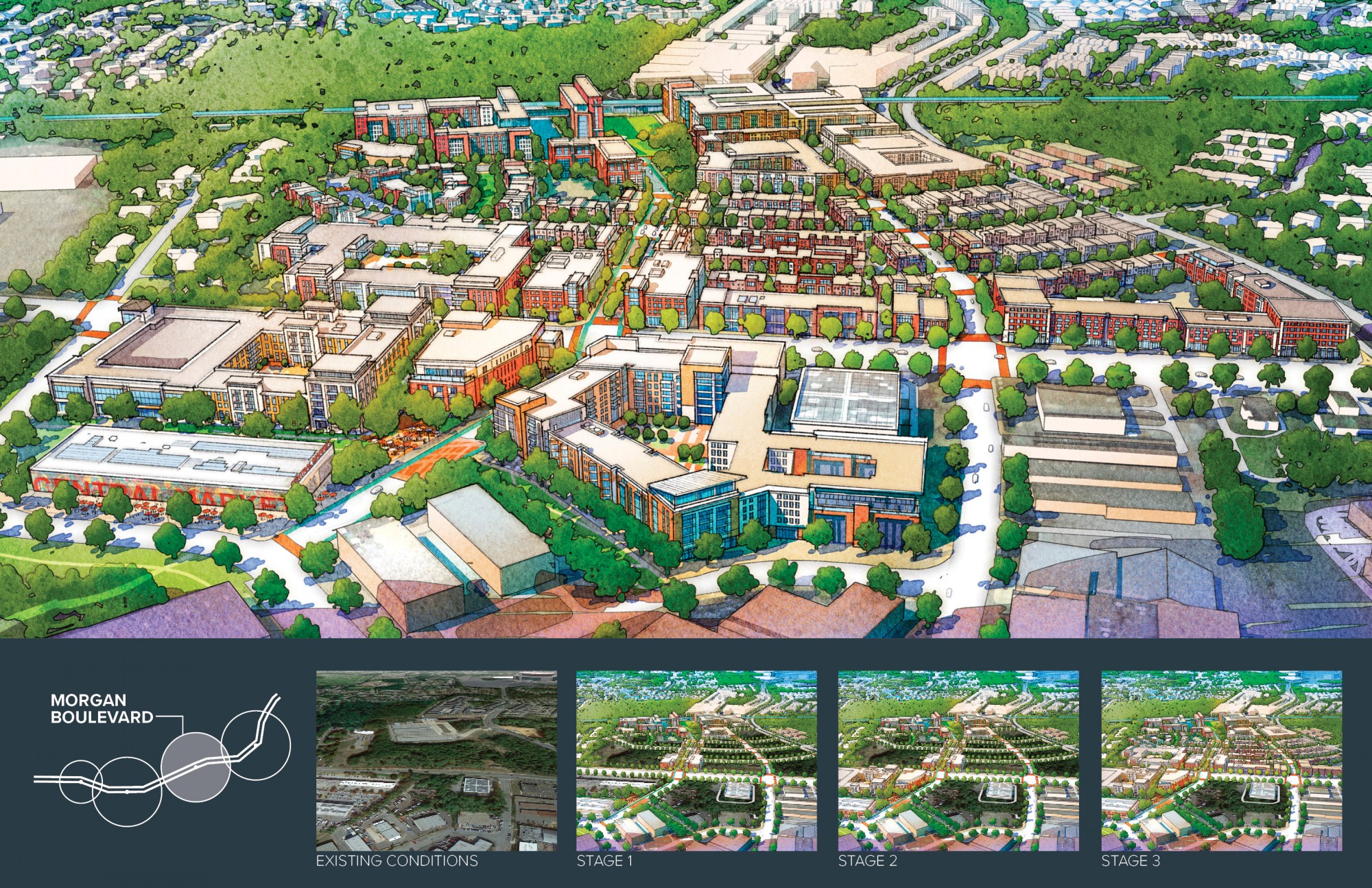
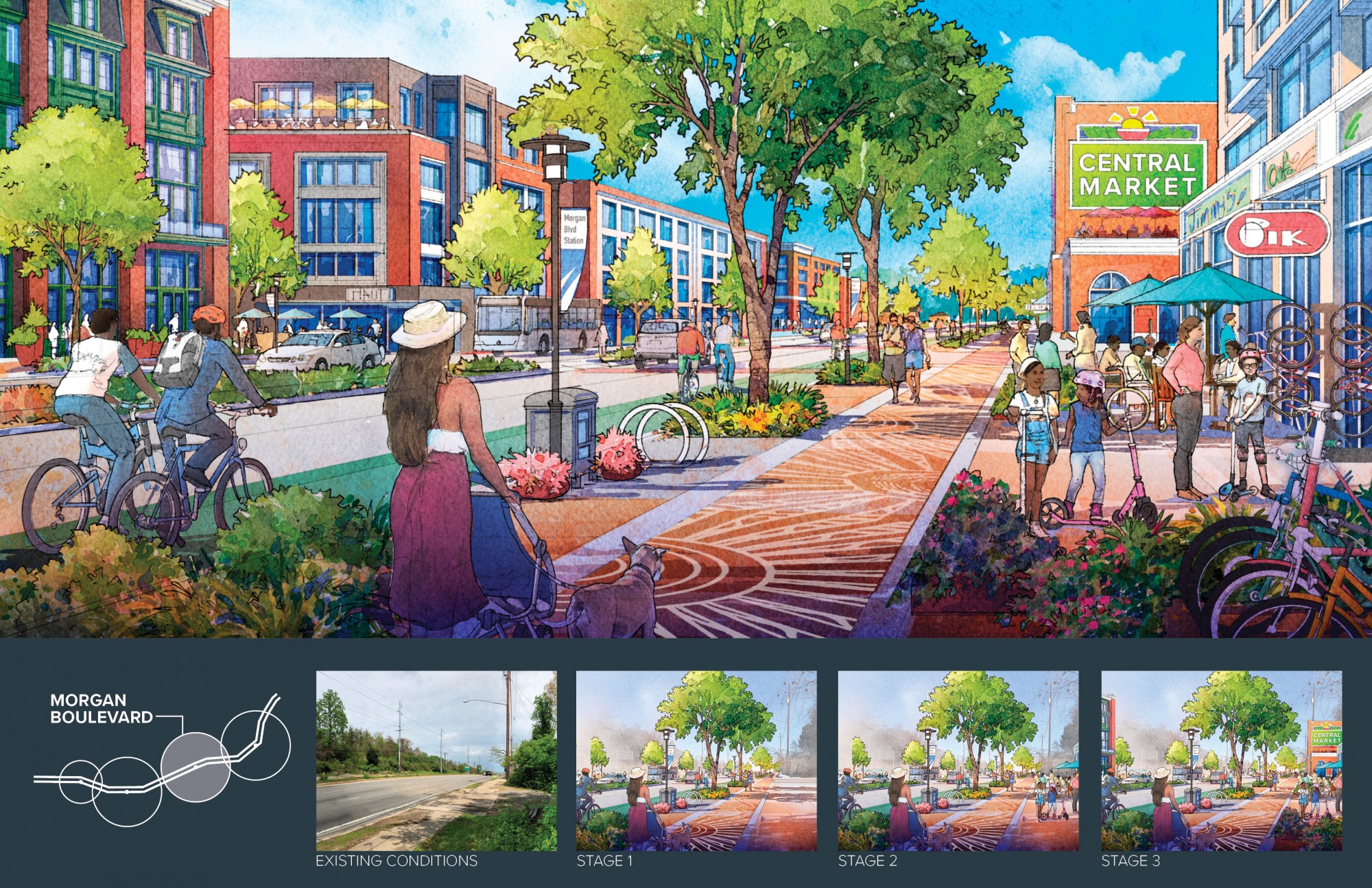
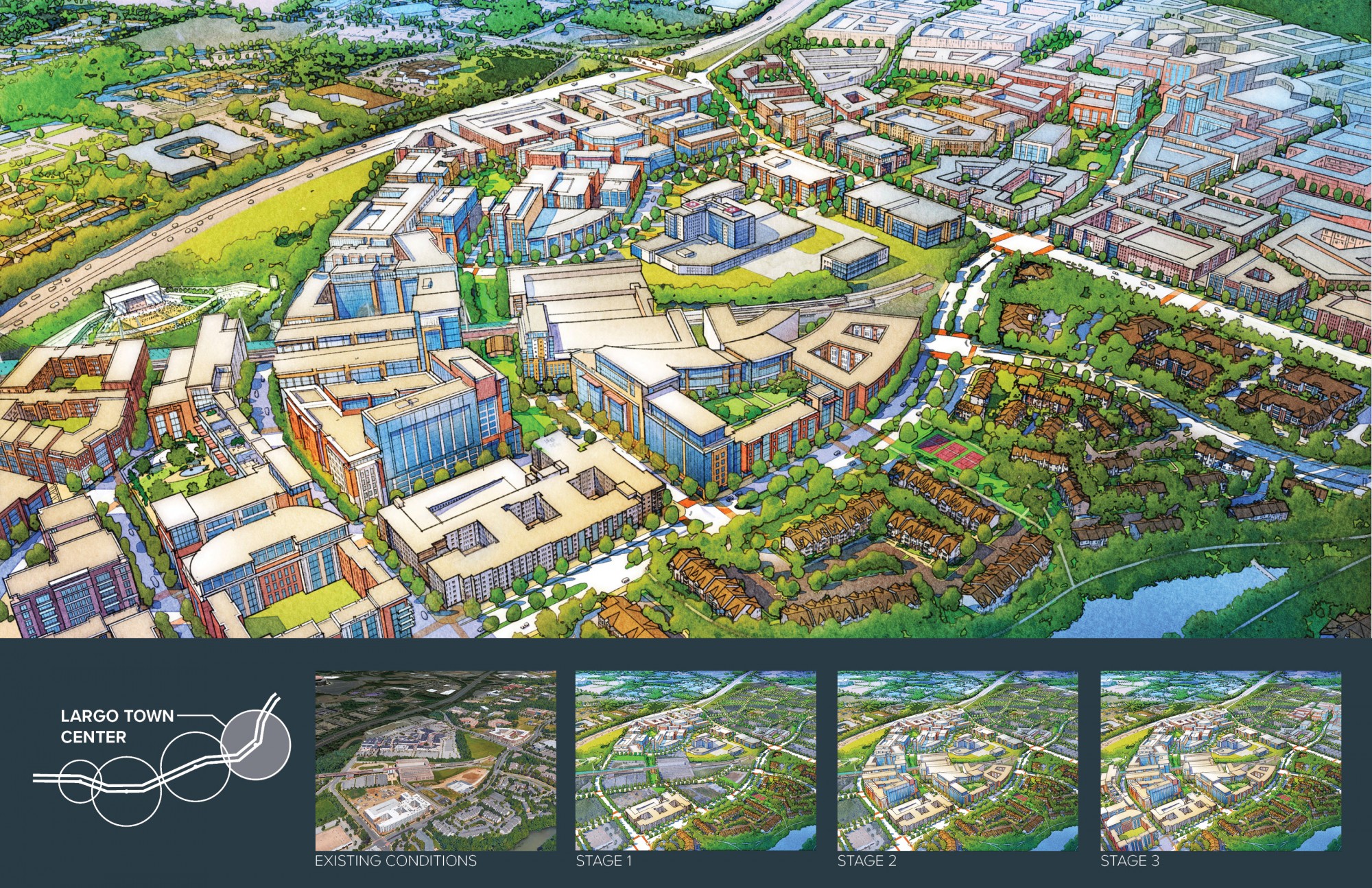
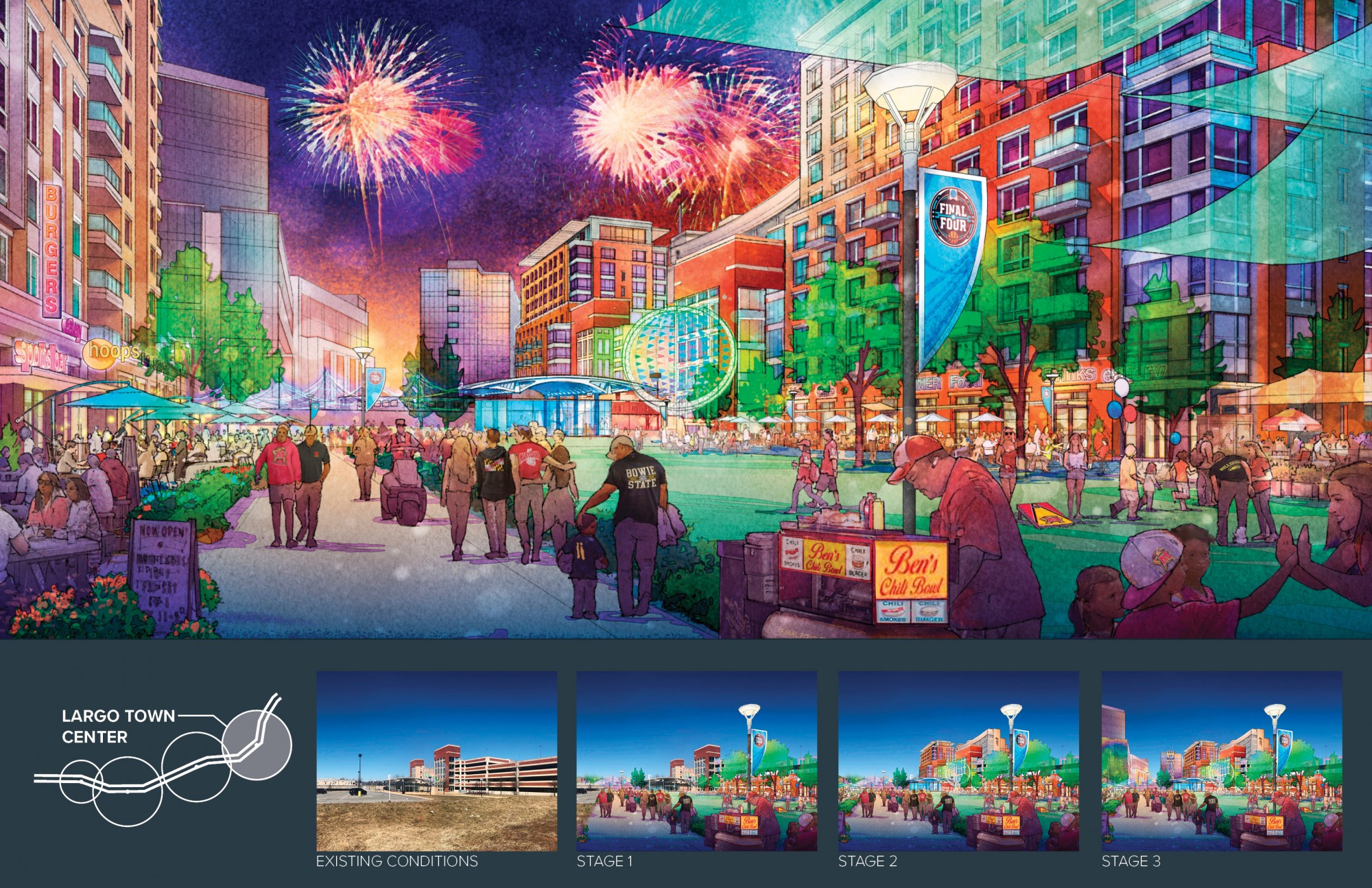
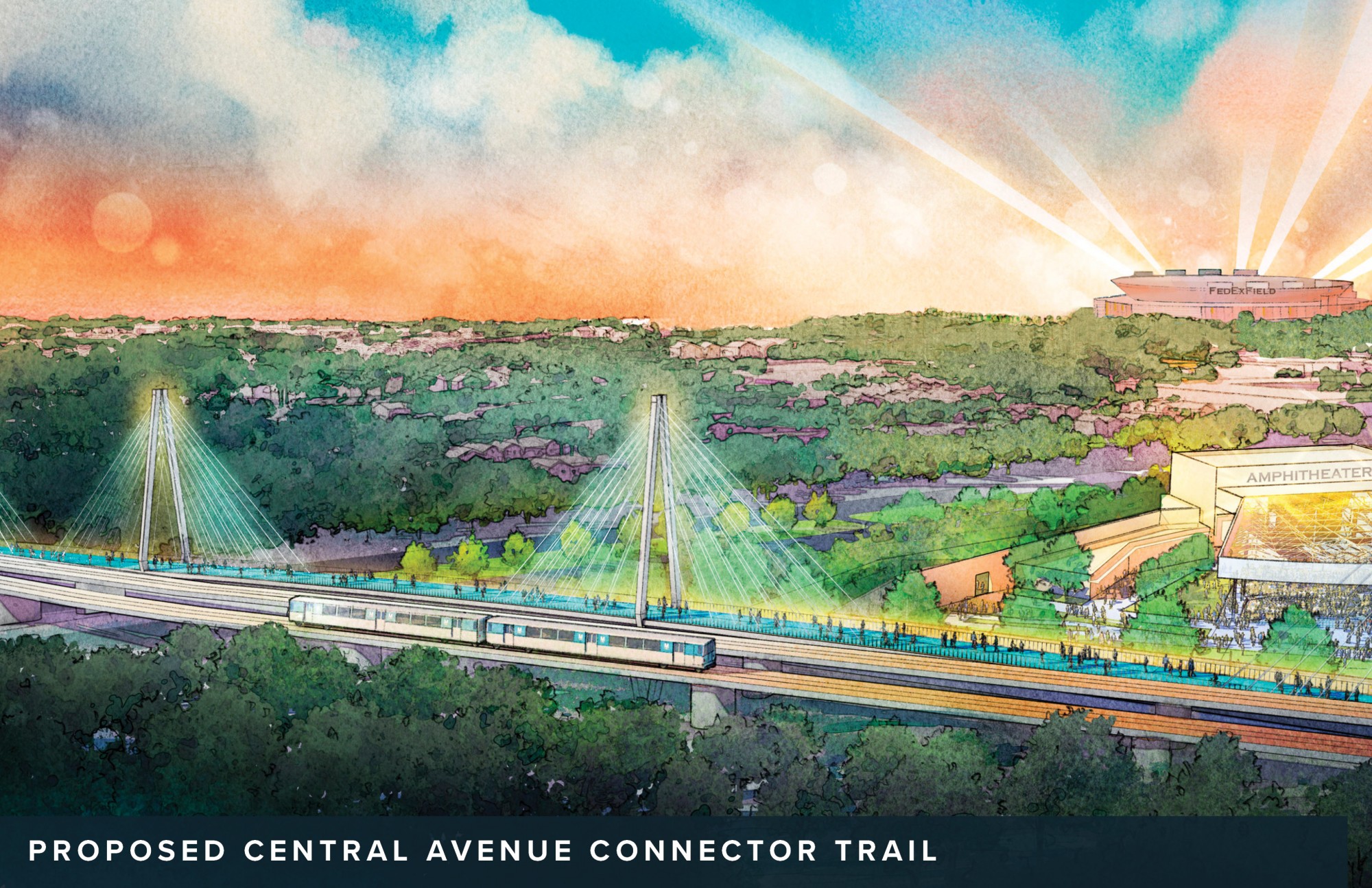
Central Avenue and Blue Line Corridor Vision Plan
Prince George’s County, MD
The Central Avenue corridor in Prince George’s County spans 4 miles from the District of Columbia Boundary to the I-495 Beltway. Today, Central Avenue is an auto-centric corridor that includes scattered, single use disconnected development, adjacent older neighborhoods, and four (4) Metro Stations. Although a dis-invested, unattractive, and high-speed corridor, Central Avenue includes several market, economic, historic, and cultural assets that should be celebrated to create a more dynamic and walkable mixed-use corridor.
Design Collective was engaged by Prince George’s County as part of a team to establish a long-term vision for transforming the corridor and key nodes into a more walkable, urban-like, and attractive corridor. Design Collective prepared concept plans, framework plans, urban design recommendations, and before-and-after artist renderings to convey a redevelopment vision. Market demand, place-based economics, and multi-modal transportation considerations were addressed by others. The Central Avenue corridor vision defines the transformation of the four (4) station areas - Capitol Heights, Addison-Seat Pleasant, Morgan Boulevard, and Largo - into more compact, mixed-use development, with densities, uses, and building heights appropriate to the context of each location. Largo is envisioned to be a vibrant, diverse, intensely developed "Downtown,” including relocated municipal buildings, new cultural and performing arts facilities, and public open spaces that will complement private redevelopment and mixed-use development. The plan outlines a vision for: 1) transforming Central Avenue and area roads into more bike and pedestrian oriented streets, 2) redeveloping the Addison Shopping Center into a neighborhood-scale mixed-use center, 3) redeveloping obsolete properties between nodes (stations) into more diverse, urban-like, neighborhood serving development, 4) incorporating local historic, art, and cultural features (signage, branding, public art, fountains, parks and plazas, for example), and 5) incorporating a Cultural Trail that links neighborhoods along the corridor to the station areas, parks, schools, shopping, and destinations.
